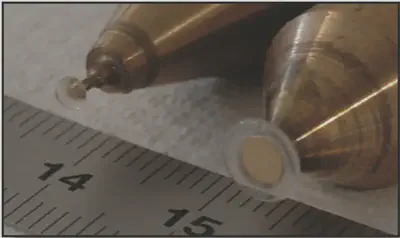Sensing

Besides non-linear optics and frequency stabilization, WGM resonators find also a broad range applications in the field of biological and chemical sensing. The long photon lifetime in high Q-resonators and the small line width of the resonances enables both high sensitivity and high measurement accuracy in such applications. Well established systems for sensing applications are microspheres made of fused silica, silica microtoroids and polystyrene beads. All this systems have an isotropic geometry and refractive index of about 1.45 or higher in common. In contrast, MgF$_2$ is a birefringent crystal with a refractive index of n$_e$ =1.387 and n$_o$=1.375. The small index gap between a resonator made of MgF$_2$ and water provides a long evanescent field at the surface of the resonator and thus a high sensitivity towards changes in the refractive index of the surrounding medium. We measured a sensitivity towards refractive index changes of the surrounding medium in a MgF$_2$ resonator that is enhanced by nearly half an order of magnitude in comparison to a silica sphere of the same size. The intrinsic Q-factors achieved in aqueous environments are easily higher than 10$^8$ and so competitive with Q-values that are frequently reported for fused silica spheres in water Optics Express 2014.